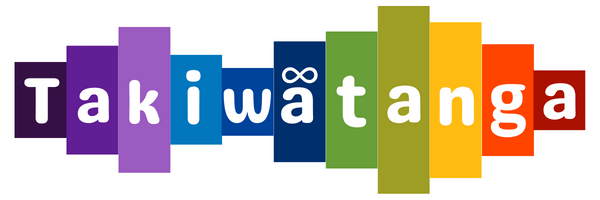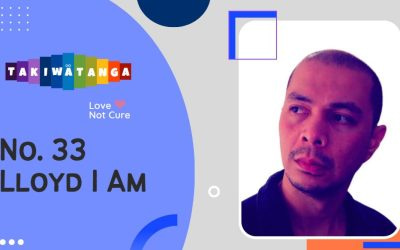Takiwātanga with Lloyd I AM
S01 E07 Day 2 Sensory processing- Modifying alert levels
UNEDITED Transcription
Pre Intro message:
Modifying alert levels?
My Own time and space | Love not Cure
Intro:
This is Lloyd I AM and you are listening to Takiwatanga, love not cure, exploring autism one strength at a time.
Body:
Today’s episode is a continuation of the Sensory Processing training. We are now in Day 2.
During the first day of the training, if you will remember we talked about the introduction to sensory processing. We have sensory input being received either by our external senses or internal senses. Our external senses are our eyes, ears, nose, tongue, and touch. While our internal senses are our vestibular, interoceptors and my favorite internal sense, the proprioceptor. We also gave high level examples to show how our brains integrate sensory input to process the information. The sensory input could be one or more depending on the situation or event.
If there is too much information being experienced by a person, this then becomes overwhelming. Chances are, this may result in sensory overwhelm which is often common for a person with autism. Everyone is different with sensory processing that is why as a parent we need to identify and understand the activity or activities that may lead to either calming or alerting for a person. The question we need answers would be, what sensory input or inputs are triggering the person’s change in alert level.
If we are aware of what those triggers are we can help adjust the child’s behaviour from high alert to just right level or from low alert to just right level.
Here are some examples of triggers. Be aware that the examples may look very subtle, and because of that we tend to ignore these triggers or maybe we are not even aware yet that these triggers are what causing the change in alert level of your child.
Generally speaking we are most aware of what is considered to be a common trigger such as going to a crowded and noisy place.
The examples that we have provided are divided into 2 groups. Let’s call the first group as Calming examples while the 2nd group will be our alerting examples. There are tons of triggers that we can think of but for the interest of time let me share about 5 examples per group identified. The examples are simple and are relatable. Feel free to start an alerting list for your child and you can add further if you want to. From that list, you can also teach your other kids, if your child has siblings or other family members about the triggers so they too are aware about these. This will give them an idea on what trigger or triggers to avoid and what not…
In my examples, I know you can come up with some better ideas than what I have but still, feel free to note them down. Consider these as additional tools on your belt. A little disclosure again, I am not an expert. I just want to cement what I have learned by teaching. I know these are simple and basic and very common and may no longer be new to you but these are fundamental information and are foundational as well for our body senses. The more aware we are of the functions and triggers on a fundamental level, the better we can understand and reason why such behaviour is happening to your child or people on the autism spectrum.
I will stop with my introduction now and we’ll go ahead with our topic
First let’s start with oral or mouth sensations. This input is sensed within our mouth so to speak. The tongue specifically will sense the taste. Like the taste of the food that we eat. Is it sour, is it sweet, is it bitter? The level of bitterness, sourness, and sweetness depends on the person.
The following are examples for calming,
- Drinking milkshake through straw
- If I may, the act of drinking is calming because a person will sense a good taste and feel a soft texture of the drink and temperature, is it cold enough or too cold? How about if the milkshake is done and yet you still continue to drink it, does the sound of a person sipping an empty glass of milkshake still calming or will it trigger alertness on the other hand? Again identifying which is which for your child is important.
- Drinking warm milk
- Similarly with milkshakes, the warm feeling of the milk is calming. Plus the milk itself usually is being drunk before bed time so a person may have a good night’s sleep.
- Eating crunchy carrots
- We did mention about crunchy carrots in the last episode and why this could be calming or can also be alerting. The sound produced by chewing the carrots for some can be alerting. While the act of chewing is calming. Chewing usually triggers our internal sense which is proprioception.
- Eating chewy food
- This is somewhat similar to eating crunchy carrots, the chewy food acts as calming due to the proprioception. The taste is also a contributing factor to that.
- Sucking on a lollipop
- The last one is also triggering the proprioception which has something to do with our muscles. Plus the taste of a lollipop which is usually sweet
On the other hand, here are examples for alerting
- Eating crackers
- The sound it produces when eating a cracker could be alerting. In my case, my son seems to love eating crackers, this may have something to do again with taste? So it will vary from child to child
- Ice cubes
- Ice cubes are considered alerting. The temperature can be a trigger. Some are sensitive to the cold feeling. If you put it in your mouth it can trigger brain freeze as well which will result in an elerting experience.
- Sour/bitter foods
- Sour or bitter foods are alerting as this is the opposite of sweetness where sweet food is considered as calming. But not too much, not too much.
- Salty food
- Again, this is similar to sour foods which is opposite of sweetness
- Spicy
- This is an obvious one. Those not into spicy food, this is not something that they will consider as having a calming effect.
Now lets move to the next sensory activity which is movement
Here are some calming activities or triggers
- Swinging
- Though the act of swinging looks like it should be in alerting space, the result to a person on the swing gives a sense of calming. My observation is that, it looks to me that swinging is somewhat like stimming to me. I mean, it is a repetitive activity right? This is just my observation and I could be 50% wrong.
- Rocking
- Similarly, this rocking activity produces calming effect
- Bouncing
- This is a calming activity as well.. Again this is a repetitive activity like rocking and swinging.
- Rhythmic movements
- Here again is an example of repetitive movement that I can say is something similar to the stimming effect. But just my observation.
- Heavy muscle work
- This is something that has to do with our proprioception.
The activities I mentioned involve muscle movement and they stimulate proprioceptors, the end result is usually a calming effect especially for people on the autism spectrum.There is something in our proprioceptors.
Moving on to alerting activities. Here are some examples
- Irregular jerky movements
- This is opposite to having rhythmic activities
- Unexpected touch
- A lot of people I suppose would react to unexpected touch on the skin. This act may end up causing anxiety to people on the autism spectrum. On the other hand, pressured touch may result in a calming effect.
- Spinning, though my son loves spinning so this is usually calming for him. It is actually depending on the person. There is no right or wrong here.
- Rapid changes of direction
- This is alerting because there is no rhythm to the activity. The person doesn’t know the next activity and this instance may be overwhelming.
- Chasing games
- Changing games is also another sample as having no way of knowing what the next move will be.
The next sensory movement is Touch.
Here are some calming examples,
- Deep pressure
- I mentioned an unexpected touch that is alarming. One way this can be counteracted is by deep pressure. It could be by pressured touch. Putting in a heavy blanket or a warm hug.
- Cuddles
- Cuddles are somewhat similar to hugs. So the same outcome will be produced out of this activity.
- Massage
- Massaging is also putting pressure on the person’s skin like deep pressure.
- Squeezy toys
- As per my observation, squeezy toys have something to do with muscles and the proprioception.
- Tight clothes
- Having tight clothes again is putting pressure on our body resulting in calming effects.
On the other hand here are some examples for alerting
- Cold
- Cold temperatures like the weather. People may end up being more anxious during winter
- Wind on skin
- Wind on the skin is like an unexpected touch. So when a wind suddenly blows to your skin, you may end up being alert as to why the sudden wind.
- Rough texture
- I remember someone on the autism spectrum has told me that they like soft textures and usually they wear clothes made of cotton.
- Labels on clothes
- One parent on the session did share some insights about these labels on shirts. In their experience, these labels have to go every time they buy new clothes for their child. It’s like having a t-shirt label made out of cactus stitched right at the back.
- Hair and nail cutting
- Hair and nail cutting is also alerting, the cut pieces of hair can go to the skin and can irritate the person that will result in alerting.
Moving to the next sensory activity which is visual
The calming examples are
- Dim lights
- Some preferred to have dimmer surroundings because bright lights may not be convenient as part of the environment.
- Pastel colours
- The colours produced by pastels are lighter and more relaxing.
- Uniform colours
- Having uniform colours is also calming. There is only one pattern in the colour and is not confusing
- Organized space
- This is basic I suppose. If your space is organized it will be calming to whoever will see your space even for you as owner of the space while.
- Smaller spaces
- This is having a comfort space around the house.
For the next sensory activity which is – sound
The sound also plays a vital role in alerting or calming the response of a person on the autism spectrum.
Here are some calming examples
- Quiet places
- We said earlier that alerting is an example of going to crowded and noisy places and quiet places are the opposite of that.
- Soft music
- Playing soft music is calming. That is fairly obvious but in my case, I love heavy metal music but whenever I play my music the level of volume is just about 9 am on the volume knob so it won’t disturb the people around especially my son. There was actually a time when I turned off my music and he came to me crying. I could not figure out what he was trying to communicate. Then I checked what he was doing before that event. I know he was only right on his corner playing but what came to me is that when I turned back on my music again, he stopped crying. I was actually thinking, does he really want to listen to that? Wow! Now I can play metal music a little bit louder (but not too loud) even when he is around and won’t have problems with him
- I guess it also has something to do with pattern, I mean regardless of music genre I guess, there is also rhythm to than as well aside from pattern. This now leads us to the next example which is
- Rhythmical sound
- SO similar example as mentioned, there is a pattern to the rhythm in music. The sound is predictable.
- Low tones
- Low tone is opposite of loud so this is considered as calming
- Classic music
- This genre of music I believe may have the same impact. Because the musical notes pattern and the instruments used are calming as well.
While for alerting
- Irregular noise
- This is the opposite of rhythmic sound. There is no pattern and causes confusion on what can be the next sound to occur.
- Unexpected noise
- Example for this is someone will shout behind you that you are not aware of. This can also be related to an accidental drop of glass that produces unexpected sound or noise
- Loud sound
- Opposite of low tones or being in a quiet place.
- High pitched
- This type of sound is also irritating to the ears.
- Variety of sound
- An example that I can give here is if you go to a movie house to watch an action film, you will hear a variety of sounds produced altogether.
These are the different sensory activities and their equivalent calming and alerting examples.
During the training session, we also discussed some examples of proprioceptive activities. These are sensory for movements associated with
- Rocking the chair which we talked about earlier as well
- Climbing – This is a muscle activity
- Bike riding – Which is also a muscle activity.
Ok, so with the information that we have discussed so far, the ideal is to be aware of these triggers so we can move away from activities that will not support the sensory needs of a person. We can manage the alert levels and make sure that the activity will be an enjoyable journey for everyone.
So the goal is to understand the sensory processing of a person and to apply the triggers appropriately .
Let me reiterate that the samples provided may be applied on a case to case basis. Not everyone is the same, it’s understanding a person’s sensory stimuli. I can not emphasize that enough.
We will continue our sensory processing discussion next week so Stay tuned!
Just to be aware that given the rise of Covid cases around NZ, as of this recording, there is a chance of training sessions being canceled or moved to a different schedule. We were informed that this may happen. In any case, we will continue to discuss succeeding training sessions but in case I will need to pause this for another date we’ll do that and we’ll just talk about something else. We’ll see you soon.
End:
Every tangata whaiTakiwātanga or person with autism is different. If you fail with one strategy, don’t stop, keep moving forward. Always remember that for every failure encounter is one step closer to your success.
Thanks for tuning in, until next time…
Me mutu te Whakawa Haere, Let’s stop judging others
Me Mahi Tahi Tatou, Let’s all work together,
Kia Maia – Kia Kaha, Be brave and Be strong




0 Comments